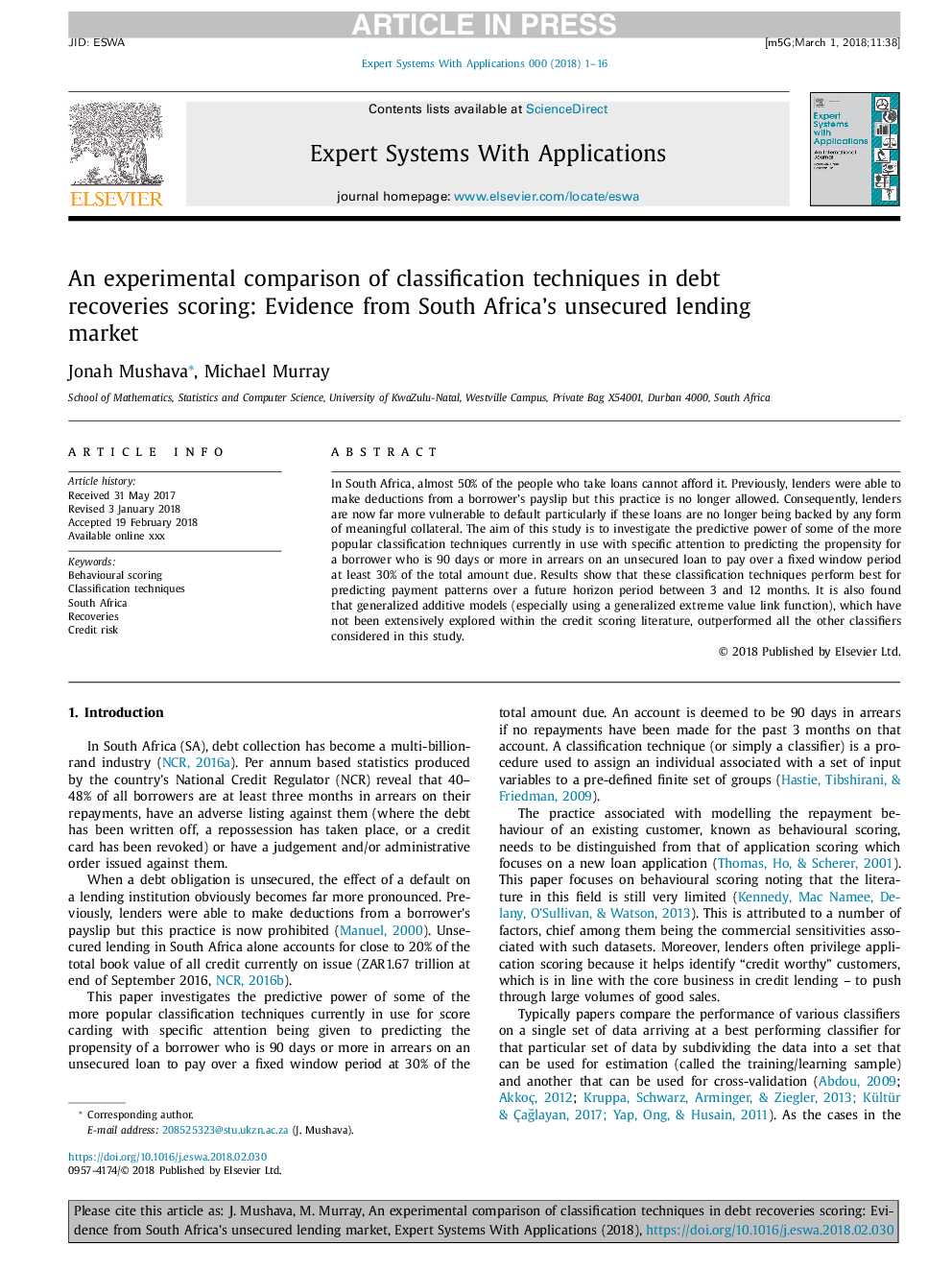| Article ID | Journal | Published Year | Pages | File Type |
|---|---|---|---|---|
| 6854783 | Expert Systems with Applications | 2018 | 16 Pages |
Abstract
In South Africa, almost 50% of the people who take loans cannot afford it. Previously, lenders were able to make deductions from a borrower's payslip but this practice is no longer allowed. Consequently, lenders are now far more vulnerable to default particularly if these loans are no longer being backed by any form of meaningful collateral. The aim of this study is to investigate the predictive power of some of the more popular classification techniques currently in use with specific attention to predicting the propensity for a borrower who is 90 days or more in arrears on an unsecured loan to pay over a fixed window period at least 30% of the total amount due. Results show that these classification techniques perform best for predicting payment patterns over a future horizon period between 3 and 12 months. It is also found that generalized additive models (especially using a generalized extreme value link function), which have not been extensively explored within the credit scoring literature, outperformed all the other classifiers considered in this study.
Related Topics
Physical Sciences and Engineering
Computer Science
Artificial Intelligence
Authors
Jonah Mushava, Michael Murray,
